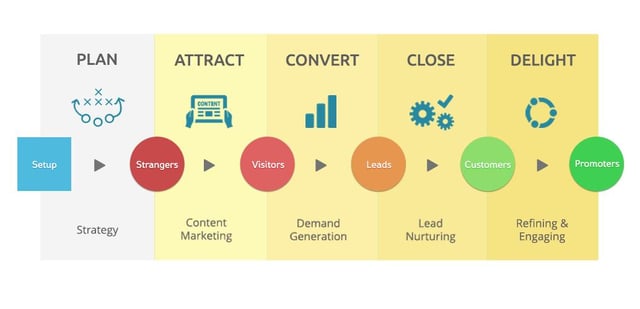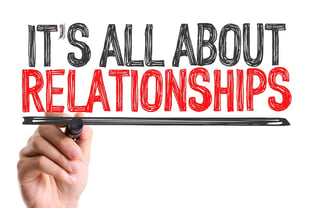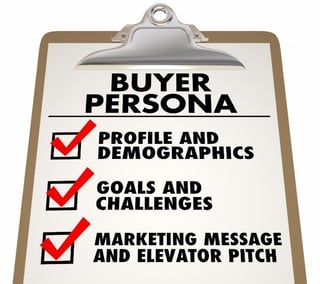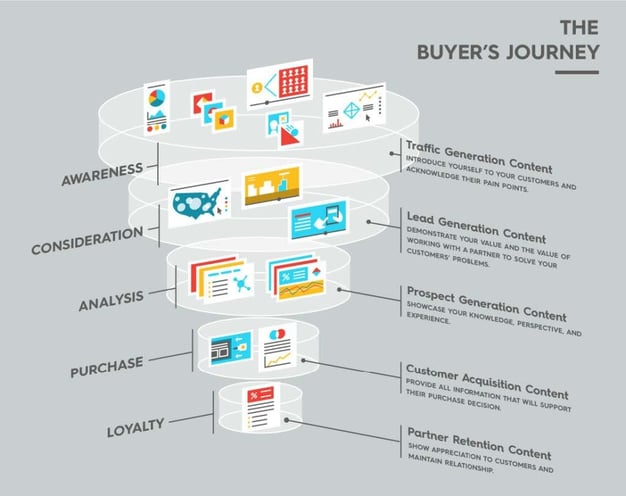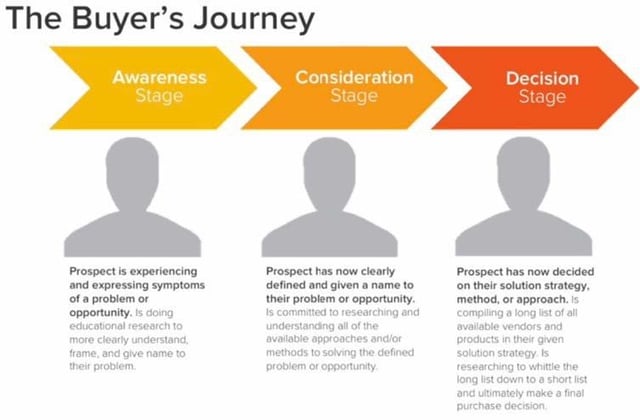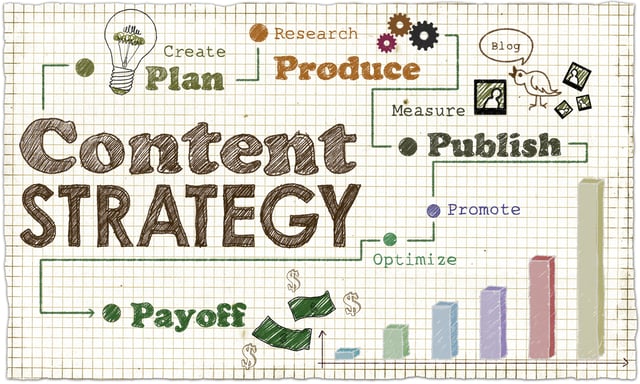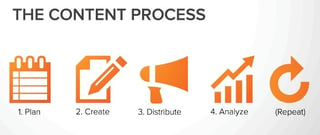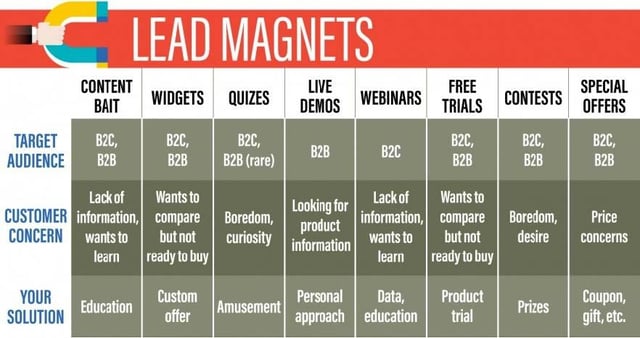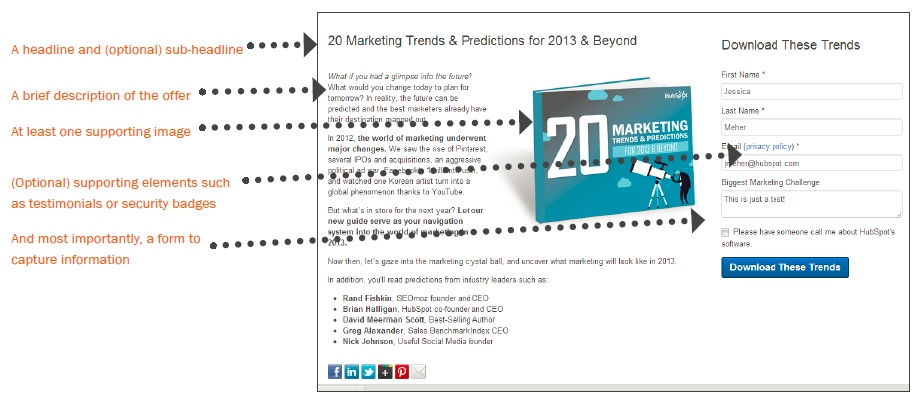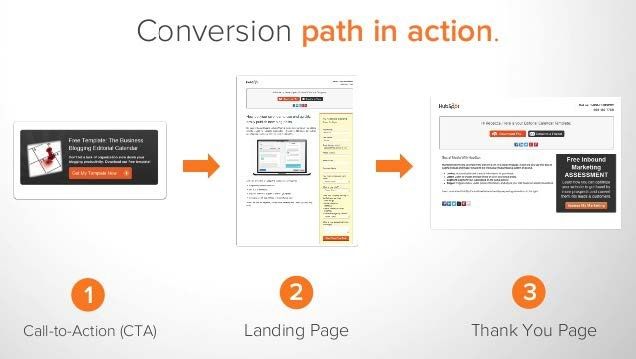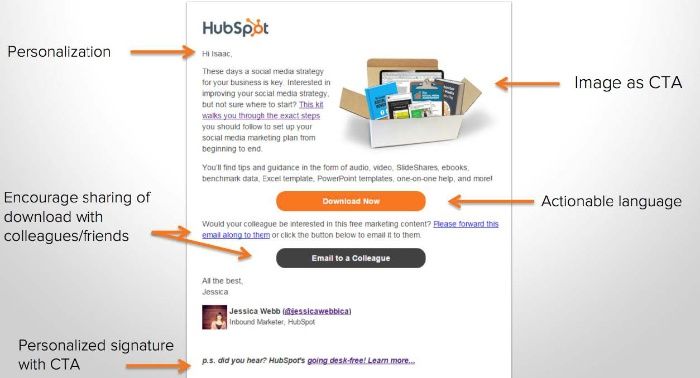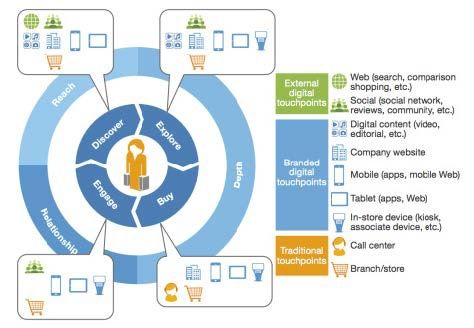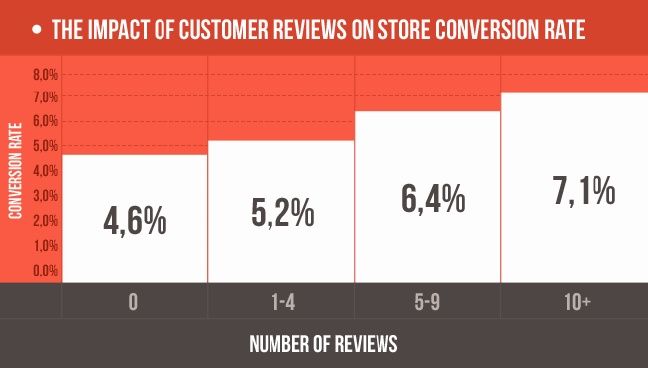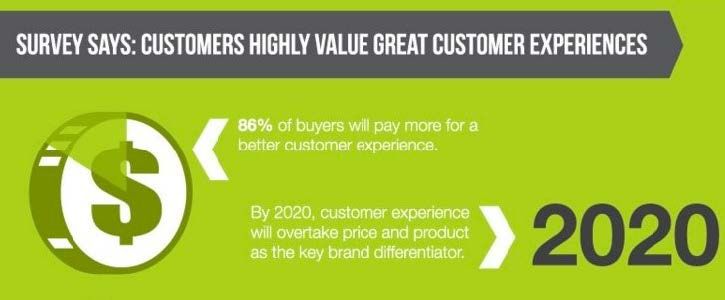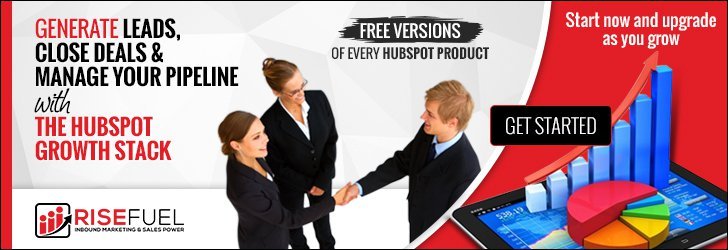Inbound marketing guide
Learn all about building a successful inbound marketing strategy.
By now, we've all heard how valuable—even essential—inbound marketing can be for growing sales and finding new customers.
|
The Complete Guide to Inbound Marketing
Everyone seems to be talking about inbound marketing. If you’re just getting your feet wet, you may wonder if it’s worth the time and resources to learn this methodology and apply it to your marketing. Inbound isn’t anything exotic or complicated. In fact, you have probably been exposed to a number of inbound marketing strategies and tactics under a variety of circumstances.
According to Hubspot, an authority in the industry, inbound marketing focuses on attracting customers through relevant and helpful content. Potential customers come across such content and find you through channels like blogs, search engines, and social media.
The content adds value at every stage in your customer's buying journey, building trust and relationships along the way. It takes them from being a visitor on your website to a paying customer and even an advocate for your brand.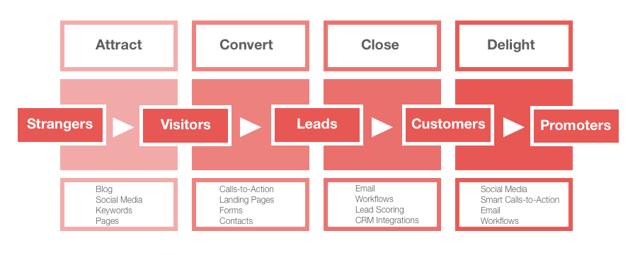
You have experienced inbound in action if you have engaged with a brand by reading a blog post, sharing contact info to download a piece of content, or clicking through a marketing email.
Unlike outbound marketing (e.g., cold calling, spam emails), inbound isn’t about fighting for potential customers’ attention. With inbound, you attract high-quality leads and turn them into customers by building trust and credibility for your business using content designed to address the problems and needs of your ideal audience.
Most important of all, inbound is about creating marketing that people love.
Chapter 1: Why Inbound?
Whether you’re selling B2B or B2C, you’ve probably noticed that today’s buyers are in the driver’s seat. They don’t like being sold to and they want to be empowered with the right information to make their purchasing decisions. They tend to do quite a bit of research online before engaging with a vendor and you want to “catch” them early on in this process by getting found.
Inbound is about creating a customer-centric experience to support this buying process. It’s about winning over customers by pulling them in and from the dollars and cents perspective, inbound marketing is also more cost-effective than outbound marketing:
|
|
Chapter 2: The Essentials of a Successful Inbound Strategy
Inbound marketing consists of four stages – attract, convert, close, and delight. It’s a customer-centric framework that helps orchestrate multiple touchpoints and organize your content production and promotion efforts.
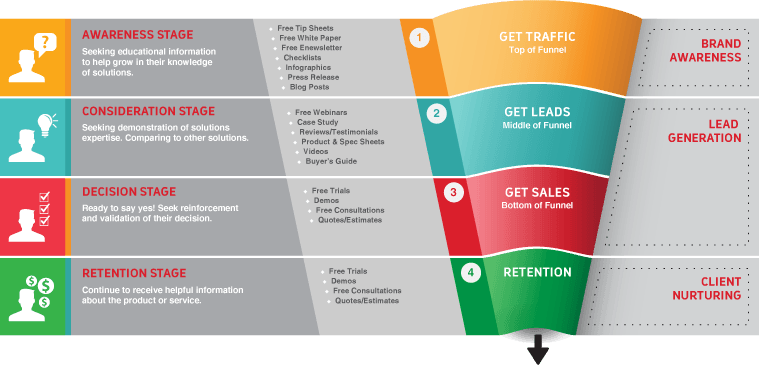
Later in this guide, we’ll look into each of these stages in detail and how to optimize your strategies.
Right now, just keep in mind that at each stage, your goal is to provide value through high-quality, educational content – in the right place at the right time and with the right messaging – to build trust and relationships with your audience so they’ll progress to the next stage in the customer journey.
Inbound marketing has a systematic approach and is proven to work for a wide variety of businesses and industries. Although its flexible framework allows you to create a strategy that’s unique to your needs, there are some fundamental components you need in order to succeed in inbound marketing. For some internet marketing strategies and tactics for your digital marketing campaigns check out this article from our friends at Bubblegum Search.
After you have these foundational elements nailed down, you’ll be able to create effective and sustainable results:
1. Buyer Persona
.png?width=600&name=buyer-persona-opcrm-example%20(1).png)
It helps you define who your ideal customers are so you can drive high-quality traffic to your website, attracting visitors who are most likely to become leads and turn into happy customers.
According to Hubspot, a buyer persona is a semi-fictional representation of your ideal customer based on market research and real data about your existing customers. It should include information about customer demographics, behavior patterns, challenges, motivations, and goals.
A detailed buyer persona will give you the structure and insight to help you determine where to focus your marketing resources, how to tailor your messaging, what kind of content to create, and how to position your offerings so you can attract the most valuable visitors, leads, and customers.
To Create A Buyer Persona, You Need To:
|
2. Buyer’s Journey
|
|
3. Content Map – Content + Context
A content map combines buyer personas and buyer’s journey to help you decide what content to create at each stage and the best channels through which to promote your content. It gives context to the content pieces so you can effectively position and promote them to maximize their impact.
A content map is a plan to deliver the right content, to the right people, at the right time. Content mapping takes into account the characteristics of the person who will be consuming the content and their lifecycle stage.
Joe Pulizzi originally defined content marketing as “a marketing technique of creating and distributing relevant and valuable content to attract, acquire, and engage a clearly defined and understood target audience – with the objective of driving profitable customer action”.
Content marketing requires a strategy or plan. But it also requires some planning, resources, processes and of course also people.
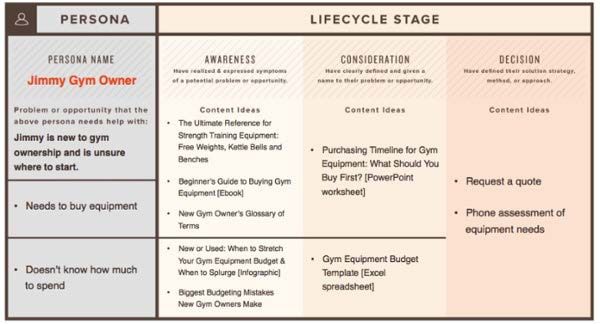
4. Content Promotion & Distribution Strategy
After you’ve invested the time and effort to create a piece of content, you need to make sure your target audience will consume it. Identify the right distribution techniques and appropriate channels so you can reach your ideal customers at the right moment.
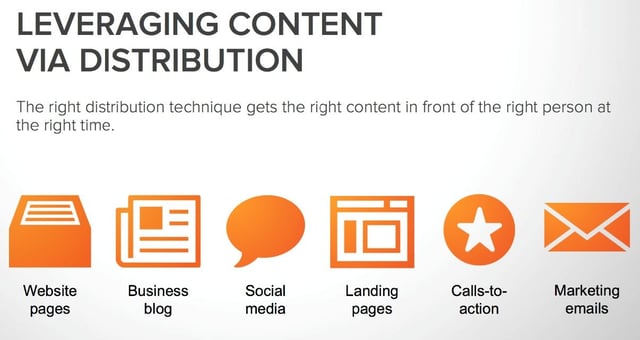
If content lives on the Internet but no one sees it, does it really exist? Aside from philosophical musings, the truth is that without a content distribution strategy, even the most creative, innovative, and groundbreaking content may never be discovered.
An effective content distribution strategy will not only put your content in front of your target audience. It’ll also help you build a relationship with them, and eventually lead them to take the desired action – watching your video, signing up for your newsletter, reading an article, or downloading a whitepaper.
Your strategy can include both paid and unpaid distribution channels. Each can work in conjunction with others, so pick and choose the channels that help you meet your business goals.
And remember, there’s no best-practice formula for content distribution. There’s only the best formula for your brand, which you’ll arrive at based on your content, audience, goals, analysis, and ongoing optimization.
Chapter 3: Driving Traffic and Attracting Prospects
You need different strategies during the four stages of inbound marketing to deliver the right message to the right audience. At the “attract” stage, focus on capturing your target audience’s attention and driving traffic to your website.
Search Engine Optimization (SEO)
SEO is essential for generating high-quality traffic to your website at the attract stage. When you optimize your website for keywords that your ideal audience will enter into the search engine regarding the topic of your expertise, it’ll show up in the search results and you’re more likely to get found. Since these people “raise their hands” and want to learn about the topic, they’re more likely to become high-quality leads that will turn into customers.
SEO can be a big hairy topic and thanks to the ever-changing algorithms, it’s a moving target. As search engine algorithms become more sophisticated, SEO is way more than just “stuffing” keywords. Search engines look for relevant and useful content that readers spend time reading.
A well-designed and engaging user experience that encourages visitors to explore your website signals to search engines that it’s relevant. In order to create content that is attractive to your ideal customers, you need to start with research.
.png?width=1000&name=article_130422_hero_59ce11faf068a9.38757826%20(1).png)
Revisit your buyer persona(s), put yourself in their shoes, and list out keywords or phrases that they’d use in online searches.
Pay attention to how they frame the problem or ask the questions. Refrain from using labels and jargons that visitors in the “attract” stage aren’t even aware of.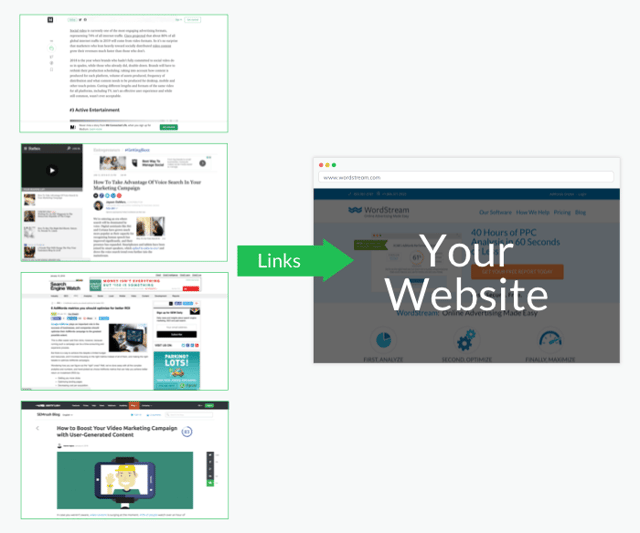
Use this list of keywords or phrases to inform your on-page SEO, making sure they’re included in page titles, descriptions, headings and content, image title and alt text, as well as URL.
In addition, search engines determine a webpage’s relevance by evaluating the amount and quality of internal and external links in the content. You’ll get extra “SEO juice” if you have links from authority sites pointing back to your pages.
If you’re a brick-and-mortar business, don’t forget to optimize for local SEO, which helps you rank high in local searches and get the attention of people looking for products or services in your geographic location.
For eCommerce merchants, listing products on Google Shopping is a great way to get in front of shoppers who are already searching for the products you offer.
Content Marketing
|
Content has a very important role in inbound marketing. It builds trust and relationships while using appropriate calls-to-action to move prospects to the next stage in the buyer’s journey.
During the attract stage, content is likely to be delivered in the form of blog posts or videos, optimized for SEO and promoted via social media. In the convert stage, you can use a “lead magnet” to generate leads. Visitors will provide you with their contact information in exchange for a piece of valuable content.
During the close stage, you’d nurture relationships with your subscribers via email marketing to turn them into customers. Last but not least, you’d continue to delight your customers and turn them into advocates using high-quality personalized content and outstanding customer support.
Keep in mind that content marketing is a long game. You have to put in consistent efforts over time for it to work for your business. Even the best content marketers need 6 – 12 months to see results. However, when you’ve gained traction, the impact will grow exponentially.
Your content is your business’s asset that continues to work year after year. A lot of seasoned content marketers are still driving a large portion of traffic to their websites with blog posts they created years ago. If you’re just starting out with a content marketing effort, keep your other promotional tactics, e.g., paid advertising, and use them to drive traffic to your content so you can gain traction more quickly.
How To Create Effective Content That Converts
The Internet has changed how people engage with brands. Just being the biggest and loudest won’t win you customers. Instead, you need to capture readers’ attention by creating content that’s relevant and valuable to a specific audience.
First, consider the purpose of the content – what business objective is it fulfilling? E.g., drive traffic to your website or turn visitors into leads. Next, what format will you use? E.g., blog post, case study, video, infographic, white-paper, calculator or worksheet, webinar, checklist, template, eBook, research report, and slide deck..png?width=300&name=download%20(11).png)
Choose a format that’s best suited for your materials, your distribution channels, and the resources available at your disposal. Most important of all, consider how your audience prefers to get their information.
After all, your content won’t serve its purpose if it doesn’t get consumed. Your audience is busy so make it easy for them to take action on the content. A 300-page eBook may look impressive (and stroke your ego!) but it won’t do any good if it’s collecting dust on your prospect’s hard drive.
Make sure the format is delivering your content in an accessible and digestible way tailored to your audience’s preferences. E.g., if they are visual learners, or if they favor Pinterest, an infographic could be a great choice. If they prefer to read, blog posts or eBooks could work well.
Of Course, You Have To Choose The Right Topic To Create Content For.
Remember the content map we talked about earlier? When you put your buyer personas and their customer journey together, you’ll come up with topic ideas that are relevant to their needs and meet them where they’re at.
Great content is insightful and educational. It helps solve your audience’s problems and challenges. It’s solution-based, not product-based. It’s helpful, not sales-y.
The focus of your content also depends on the stages of the buyer’s journey you’re targeting:
- Awareness stage: focus on the problem or opportunity faced by your prospects. It should be informative and educational.
- Consideration stage: focus on the solution to the problem.
- Decision stage: focus on the specific products or services that will deliver the solution.
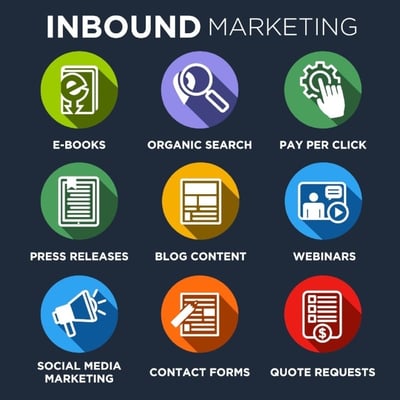
Content Distribution & Promotion
When you hit publish, your work isn’t done. In fact, it’s just getting started! Most seasoned content marketers spend 20% of their time creating content and 80% of their time distributing and promoting the content to ensure that it gets in front of the right audience and drives quality traffic to their websites.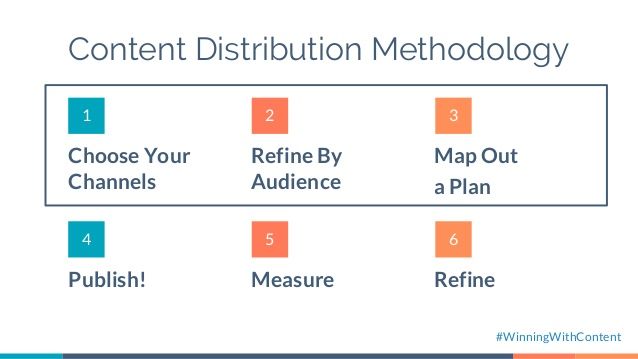
Revisit your buyer personas and consider where they get their information. Focus on sharing your content on those channels to get the most exposure to your target audience.
There are many ways to distribute your content and here are a few ideas:
- Send an email to your list.
- Post multiple times on social media and test different copies.
- Syndicate content on authority sites.
- Reach out to influencers.
- Submit posts to the content community (e.g., inbound.org, growthhackers.com.)
- Make it easy for readers to share your content (e.g., Click to Tweet, “Pin It” button.
- Use paid ads and remarketing.
- Re-purpose content on platforms such as LinkedIn Pulse or Medium.
|
Chapter 4: Turning Visitors Into Leads
At the “convert” stage, visitors are checking out your website and content. Take this opportunity to capture their information so you can continue the conversation to build trust and relationships with them.
Lead Magnet
Back in the day, you can simply say, “sign up for our newsletter!” and people would happily hand over their email addresses. Not anymore – nobody wants more random newsletters in their already cluttered inboxes!
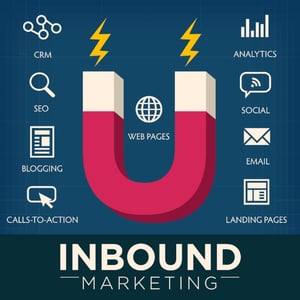 Nowadays, you’d have to offer something of value to entice visitors to share their contact information. This kind of content is often called a “lead magnet”.
Nowadays, you’d have to offer something of value to entice visitors to share their contact information. This kind of content is often called a “lead magnet”.
Lead magnets can come in many shapes and forms, such as eBooks, checklists, video training, email series, guides, templates, original data or research, white papers, SlideShare presentations, podcasts, infographics, and webinars.
To generate high-quality leads, a lead magnet needs to address the particular problem or challenge you can solve for your prospects.
You don’t have to cover a lot of ground. Instead, focus on one aspect of the issue you can solve with one digestible piece of content so your prospects can experience the results you can create for them.
Choose a format that suits your materials and the learning style of your audience – the presentation should be professional but it doesn’t have to be complicated. Don’t forget to include a call-to-action to take your leads further down the buyer’s journey.
Just like any piece of content, if you build it they probably won’t come! You need to put your lead magnet in front of your prospects in as many places as possible:
|
Landing Page
A landing page is designed to accomplish one objective and one objective only – to turn a visitor into a lead. Visitors are directed to focus on the only action they can take on the page – signing up for the lead magnet – without other distractions (e.g., navigation elements, other calls-to-action.)
If you’re doing paid advertising to target multiple audience segments with different messaging, you can create a series of landing pages each with a slightly different copy to match the message on the ads.
Many businesses have multiple lead magnets and landing pages that allow them to deliver a seamless user experience by showing the most appropriate messaging to visitors.
In fact, HubSpot research has found that companies with 30 or more landing pages generate seven times more leads than companies that have less than 10 landing pages. The centerpiece of a landing page is a form for gathering information from your visitors.
Generally speaking, you want to make it easy for visitors to sign up so the less information you ask for, the higher the conversion rate. However, there are some good reasons to request more information, depending on your business objectives.
For many B2B marketers, there’s tremendous value in getting additional information on a prospect’s role or company size for effective segmentation. In that case, a couple of extra fields can help set you up for success down the line.
Besides a form, there are other essential components of a successful landing page:
- Write a clear, concise, and action-oriented headline.
- Include a clear explanation of the offer with an emphasis on the value or benefits.
- Remove all navigation elements or links to other pages/sites.
- Make sure the form length (i.e., number of fields or details required) mirrors the value of your offer.
- Include a relevant image or short video.
- Make sure your call-to-action button is prominently displayed.
- Add social sharing icons.
Thank You Page
After your prospects have signed up for your lead magnet, they’ll be directed to a “thank you” page. This page gives you a great opportunity to present the next step to the newly converted leads while they’re excited about your products or services.
|
Chapter 5: Closing The Deal
Ultimately, you need to be making sales in order to be in business. That means turning your leads into customers. The leads you’ve generated so far have opted in to hear from you, so now is the time to show up, reach out, and cultivate that relationship.
Keep in mind that first and foremost, you should be adding value every step of the way.
Email Marketing
We hear this a lot: isn’t email dead? Well, would you consider a marketing strategy that can generate a 4,400% ROI dead? That’s right, email marketing easily has the highest ROI among the many inbound marketing tactics.
We aren’t talking about spamming people or buying lists. We’re talking about sending emails to people who have opted in to your list and using a series of emails to nurture these leads.
Here are some email marketing stats you can’t ignore:
- 77% of consumers prefer email for marketing communications.
- 91% of consumers check their email daily.
- 76% of marketers say they use email more than they have in the past.
|
Focus your email marketing on nurturing your leads. When you help them grow or do something better, they’re more open to buying from you or having a conversation with your sales reps.
Besides “how-to” content, you can also share customer testimonials, case studies, or new product features to push your “hot” leads over the fence. Don’t forget to analyze your metrics and A/B test your emails to find out what works best for your audience.
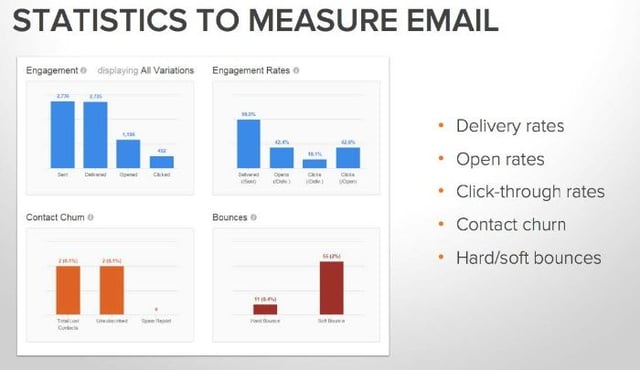
Omni-Channel Personalization
You can now use personalization technologies to leverage the vast amount of customer data available to you and deliver the most relevant content or offers to your prospects and customers. A single customer view is the foundation of omnichannel marketing.
It enables the delivery of a seamless and personalized experience across all customer touchpoints, such as email, social media, website, mobile app, call center, and physical location in real-time.
Each customer interaction with your brand informs the kind of content or offer you can deliver to take the prospect another step closer to conversion.
Here are some ideas for using omnichannel personalization to close the deal:
|
Chapter 6: Cultivating Loyalty & Advocacy
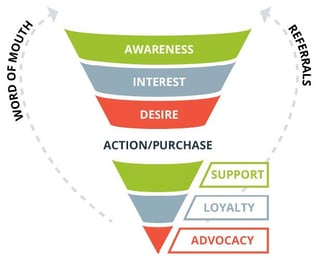
For most businesses, the cost of acquiring new customers and clients is often much higher than that of retaining existing ones. Inbound marketing,
with its focus on building trust and relationships through consistently delivering high-value content, is well suited to maintaining and augmenting customer relationships.
(That’s why SaaS companies, which rely heavily on customer retention to be profitable, are big fans of the inbound methodology.)
Loyalty and advocacy are built on innovation, communication, and education. It’s critical to deliver an outstanding customer experience by listening to your customers, innovating your products and services, letting them know about the improvements, and providing valuable content.
Customer-Exclusive Content & Offers
Make your customers feel special by sending them exclusive in-depth content or inviting them to customer-only webinars. In addition, send them emails about exclusive offers, discounts, or access to new products that are relevant to them.
A large part of getting your customers to stick with you consists of giving them a continuous stream of reasons why. The more indispensable your product or service, the less likely they'll be to leave.
You probably know about the many benefits of content marketing. But you might not know that you can leverage these same benefits for retention, as well. For example, offer webinars and white papers exclusive to current customers that showcase anything from product tutorials to industry trends.
Customer-Only Communities
You can set up groups on social media for your customers to connect and share information with each other. These communities not only foster loyalty but also allow you to listen in and gain insights on how you can improve your products and dial in your messaging.
In addition, some active communities can double-duty as customer support. Loyal customers often jump in to answer questions and offer suggestions. You do need to monitor these interactions to make sure questions get answered accurately.
Your community of customers does not only exist online. Bringing community members together for live events, like customer conferences and user group meetings is important to strengthen the community both on and offline.
On the flip side, businesses can leverage the enthusiasm and momentum from great in-person events to reignite interest in what your community has to offer once the live meeting ends.
In order to really claim that a community is successful, it needs to serve everyone.
- For your customers, this means finding the value in what your community has to offer and having a reason to engage with the people, content, and features on an ongoing basis.
- For your company, this means using the community to leverage stronger relationships to achieve business outcomes and produce measurable results.
Customer Reviews
|
Customer Support
Simply having a contact form or a 1-800 number on your website is no longer enough. Customers expect to get support from touchpoints of their choice whenever they need it.
|
Chapter 7: A Timeless Principle Powered By Data
We’ve talked about many strategies, tactics, and tools in this guide. New marketing technologies are emerging every day and it can be overwhelming at first when it comes to implementing the inbound methodology.
But don’t worry. The inbound methodology isn’t about using a specific piece of software or implementing one immutable tactic. The guiding principle is actually quite simple – to create marketing that people love.
It starts with a tool we all have – empathy.
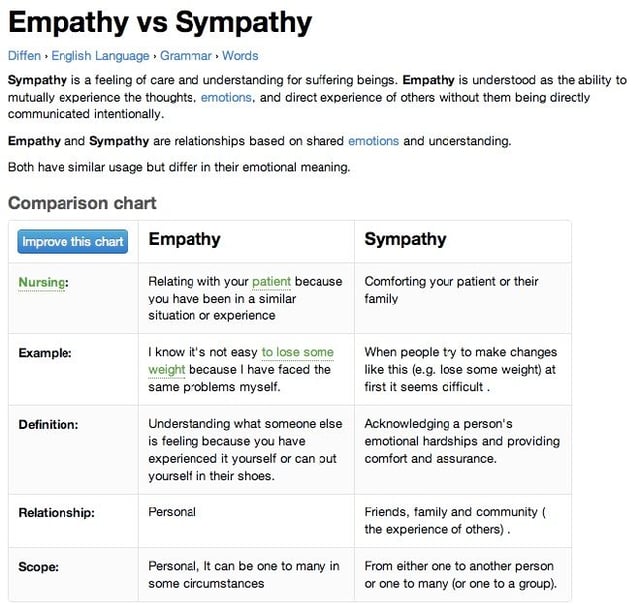
It’s built on something we all know how to do – relating to others and being helpful. Unlike traditional marketing, inbound marketing is agile and measurable. John Wanamaker once said, “Half the money I spend on advertising is wasted; the trouble is, I don't know which half.”
With inbound marketing aided by today’s technologies, we can put this quote to rest. The well-structured inbound methodology takes the guesswork out of many marketing activities.
You don’t have to wonder what to do first and what to do next. You can track (almost) all your marketing dollars. The data and analytics give you valuable insights to fine-tune your strategies so you can create messaging and customer experience that is both on-brand and effective.
Not to mention, the inbound methodology is very scalable. You can start small and work your way up as you grow, using data gathered along the way to improve your strategies and maximize your ROI.
Depending on your budget, you can gradually build a team or work with an agency to get access to experts who are up-to-the-minute with the latest and greatest in the discipline.
Inbound marketing is only going to become more effective, now that more businesses have recognized its effectiveness and are investing more resources to fine-tune the methodology.
Don’t miss the boat… Hop on board now and find out how inbound marketing can impact your bottom line.
Let’s talk about your challenges, goals, and timelines to determine the right services and solutions for your team.
Schedule a time to speak with a member of our team.

